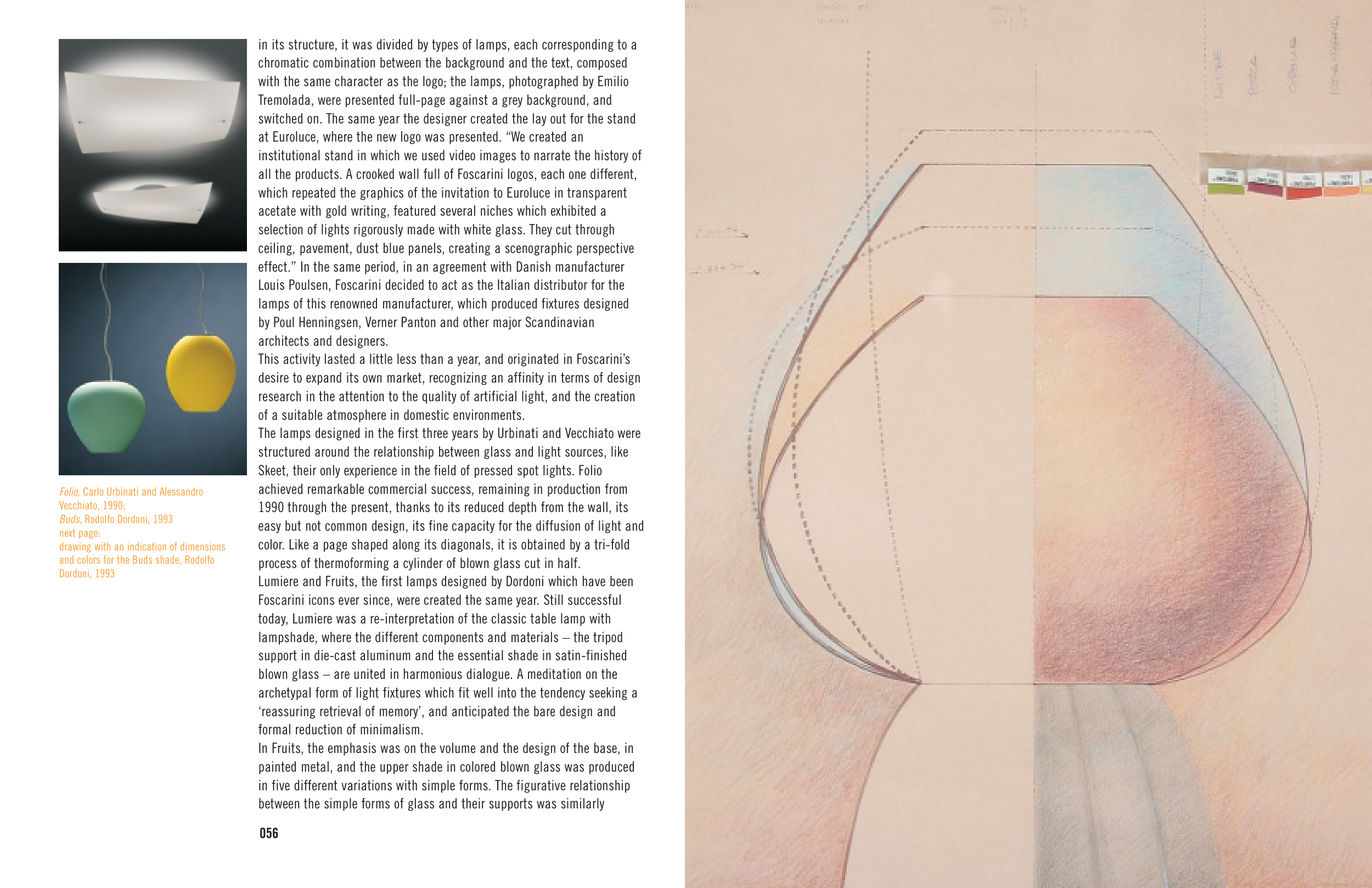056
in its structure, it was divided by types of lamps, each corresponding to a
chromatic combination between the background and the text, composed
with the same character as the logo; the lamps, photographed by Emilio
Tremolada, were presented full-page against a grey background, and
switched on. The same year the designer created the lay out for the stand
at Euroluce, where the new logo was presented. “We created an
institutional stand in which we used video images to narrate the history of
all the products. A crooked wall full of Foscarini logos, each one different,
which repeated the graphics of the invitation to Euroluce in transparent
acetate with gold writing, featured several niches which exhibited a
selection of lights rigorously made with white glass. They cut through
ceiling, pavement, dust blue panels, creating a scenographic perspective
effect.” In the same period, in an agreement with Danish manufacturer
Louis Poulsen, Foscarini decided to act as the Italian distributor for the
lamps of this renowned manufacturer, which produced fixtures designed
by Poul Henningsen, Verner Panton and other major Scandinavian
architects and designers.
This activity lasted a little less than a year, and originated in Foscarini’s
desire to expand its own market, recognizing an affinity in terms of design
research in the attention to the quality of artificial light, and the creation
of a suitable atmosphere in domestic environments.
The lamps designed in the first three years by Urbinati and Vecchiato were
structured around the relationship between glass and light sources, like
Skeet, their only experience in the field of pressed spot lights. Folio
achieved remarkable commercial success, remaining in production from
1990 through the present, thanks to its reduced depth from the wall, its
easy but not common design, its fine capacity for the diffusion of light and
color. Like a page shaped along its diagonals, it is obtained by a tri-fold
process of thermoforming a cylinder of blown glass cut in half.
Lumiere and Fruits, the first lamps designed by Dordoni which have been
Foscarini icons ever since, were created the same year. Still successful
today, Lumiere was a re-interpretation of the classic table lamp with
lampshade, where the different components and materials – the tripod
support in die-cast aluminum and the essential shade in satin-finished
blown glass – are united in harmonious dialogue. A meditation on the
archetypal form of light fixtures which fit well into the tendency seeking a
‘reassuring retrieval of memory’, and anticipated the bare design and
formal reduction of minimalism.
In Fruits, the emphasis was on the volume and the design of the base, in
painted metal, and the upper shade in colored blown glass was produced
in five different variations with simple forms. The figurative relationship
between the simple forms of glass and their supports was similarly
Folio, Carlo Urbinati and Alessandro
Vecchiato, 1990;
Buds, Rodolfo Dordoni, 1993
next page:
drawing with an indication of dimensions
and colors for the Buds shade, Rodolfo
Dordoni, 1993


